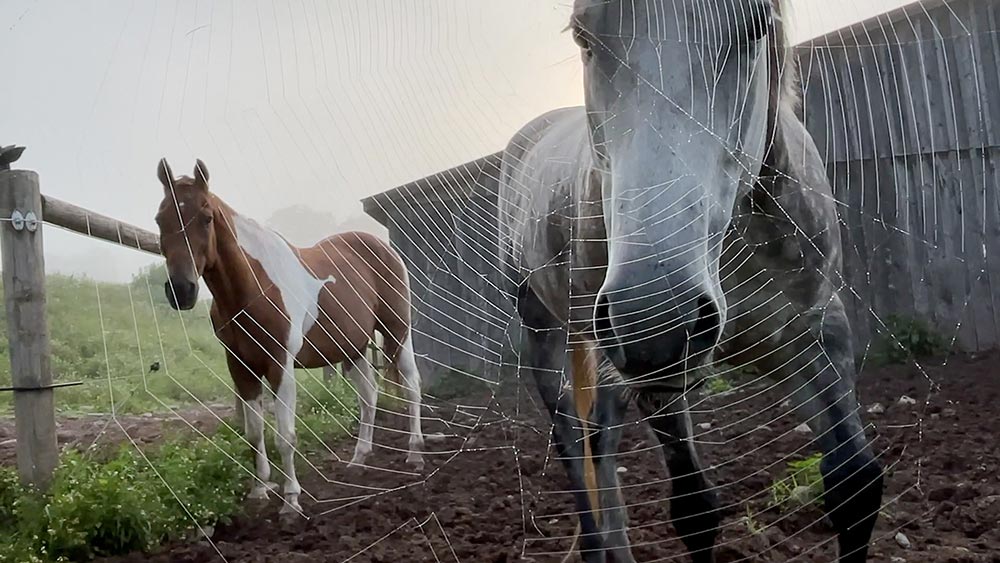Near the end of her film Horse Opera (2019 - 2022), the Canadian artist, writer, and filmmaker Moyra Davey narrates an interaction between two characters at the beginning of the Covid-19 pandemic. “Her friend Lyra in Vancouver texts her two words: ‘the bardo.’ She’d heard the word but never knew its meaning,”’ she says in the third-person. Horse Opera—now on view through July 19 at Higher Pictures—operates as a cinematic bardo, capturing a forced moment of repose for an artist juggling the past and the present day through text, animal imagery, and the masterful incorporation of others’ art.
Davey shot Horse Opera in upstate New York, where she lived on a horse farm during the Covid-19 pandemic. Her images are all details of farm life, toggling between the sublime—Davey’s cozy farmhouse living room, morning dew on a spiderweb—and deeply base—horses pissing in their stalls. The only brief diversion from these bucolic images are a few extended scenes of the artist pacing back-and-forth in her house, narrating the fictional exploits of a coterie of characters at the intersection of New York’s nightlife and literary scenes. Over what is implied to be decades, they dance in basements, go on bad trips, and figure out how to write about their own lives by drawing from other authors and poets. One character, Elle, is given such prominence and interiority in Davey’s monologue that she becomes a type of stand-in for the artist herself. Davey notes Elle’s struggles with substance abuse, as well as her medical and familial troubles, but most importantly details how she manages to turn all of that into art––a particularly telling moment comes when she scraps her manuscript after reading Anne Boyer’s 2019 memoir The Undying. As is common in Davey’s work, the manner in which art figures in her characters’ lives gives the narrative its shape by fixing it to a specific moment in American culture. Here, the poetry of Charles Olson, David Mancuso’s loft parties, and Hilton Als’s The Women all play a significant role. Then, there’s also the more threatening and contemporary time-post: a mention of Covid-19, which became the impetus for Davey’s move to the countryside.
Despite Horse Opera’s third-person narration, the juxtaposition between New York debauchery and quiet rural life creates a deeply personal image of the artist at a crossroads. Her past looms large but is distant enough to be viewed with a newfound sense of objectivity. The largely nocturnal rhythms of a previous life defined by loft parties, drug-induced hallucinations, and the thumping bass of dance records are replaced by a new life cycle populated by early morning sunrises and newborn animals. If Davey found herself caught in limbo, Horse Opera is the story of her way out.
Horse Opera is on view through July 19 at Higher Pictures.



